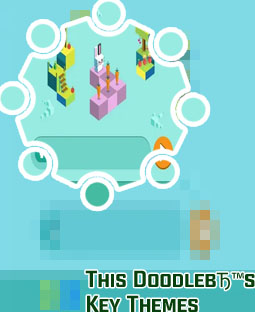
Google Doodles have become a popular way for the search engine giant to celebrate various events and figures throughout history. One of the most beloved features of Google Doodles are the games that are often included in the doodles. These games range from simple to complex, and have drawn in thousands of players from around the world. In this article, we will explore three articles that delve into the world of popular Google Doodle games, providing insights into the design, popularity, and impact of these interactive experiences.
Google Doodle games have become a beloved part of many people's online experience over the years. From simple interactive doodles to full-fledged games, Google has consistently impressed users with their creativity and innovation. One of the most popular Google Doodle games was the 2010 Pac-Man doodle, which celebrated the 30th anniversary of the iconic arcade game. This interactive doodle allowed users to play the classic game right on the Google homepage, much to the delight of fans around the world.
Another standout Google Doodle game was the 2017 cricket game, which coincided with the ICC Champions Trophy. This game allowed users to play as a cricket player and compete in a virtual cricket match. It was a huge hit among cricket fans and showcased Google's commitment to celebrating global events and sports through their doodles.
Google Doodle games have featured famous people such as Freddie Mercury, Beethoven, and Marie Curie, as well as important historical events like the 2012 London Olympics and the 50th anniversary of Doctor Who. These doodles are not only entertaining but also educational, giving users a fun way to learn about significant people and events in history.
Google Doodle fans, get ready to go behind the scenes of your favorite interactive games! Ever wondered how those cute and creative doodles come to life? Google recently opened up about their design and development process, giving us a peek into the fascinating world of doodle games.
The process starts with a brainstorming session where designers come up with ideas based on holidays, historical events, or famous personalities. Once an idea is chosen, the team works on sketching out the concept and refining it until it's just right. From there, developers step in to bring the doodle to life using a combination of art, animation, and code.
What's truly impressive is the attention to detail that goes into each doodle game. From the intricate artwork to the seamless gameplay, it's clear that Google's design team is dedicated to creating a fun and engaging experience for users of all ages.
This glimpse into Google's doodle-making process is not only fascinating but also sheds light on the creativity and innovation that goes into designing these interactive games. It's a reminder of the power of technology to bring joy and entertainment to people around the world.
Google Doodle games have taken the internet by storm, captivating audiences around the world and leading many down a rabbit hole of addictive gameplay. But what is it about these simple, yet engaging games that keeps us coming back for more?
Psychologists have long studied the psychology behind gaming addiction, and Google Doodle games are no exception. The colorful graphics, interactive elements, and competitive nature of these games all play a role in keeping players hooked. From the thrill of achieving a new high score to the satisfaction of completing a challenging level, there are many psychological factors at play.
Furthermore, the accessibility of Google Doodle games adds to their addictive nature. With the games readily available on the Google homepage, it's easy for players to quickly jump in and start playing. This instant gratification only serves to fuel the desire to keep playing and beat their previous scores.
In a world where technology is increasingly integrated into our daily lives, understanding the psychology behind popular Google Doodle games is more important than ever. By recognizing the factors that make these games so addictive, we can better understand our own behaviors and make more informed choices about how we spend our time online.
